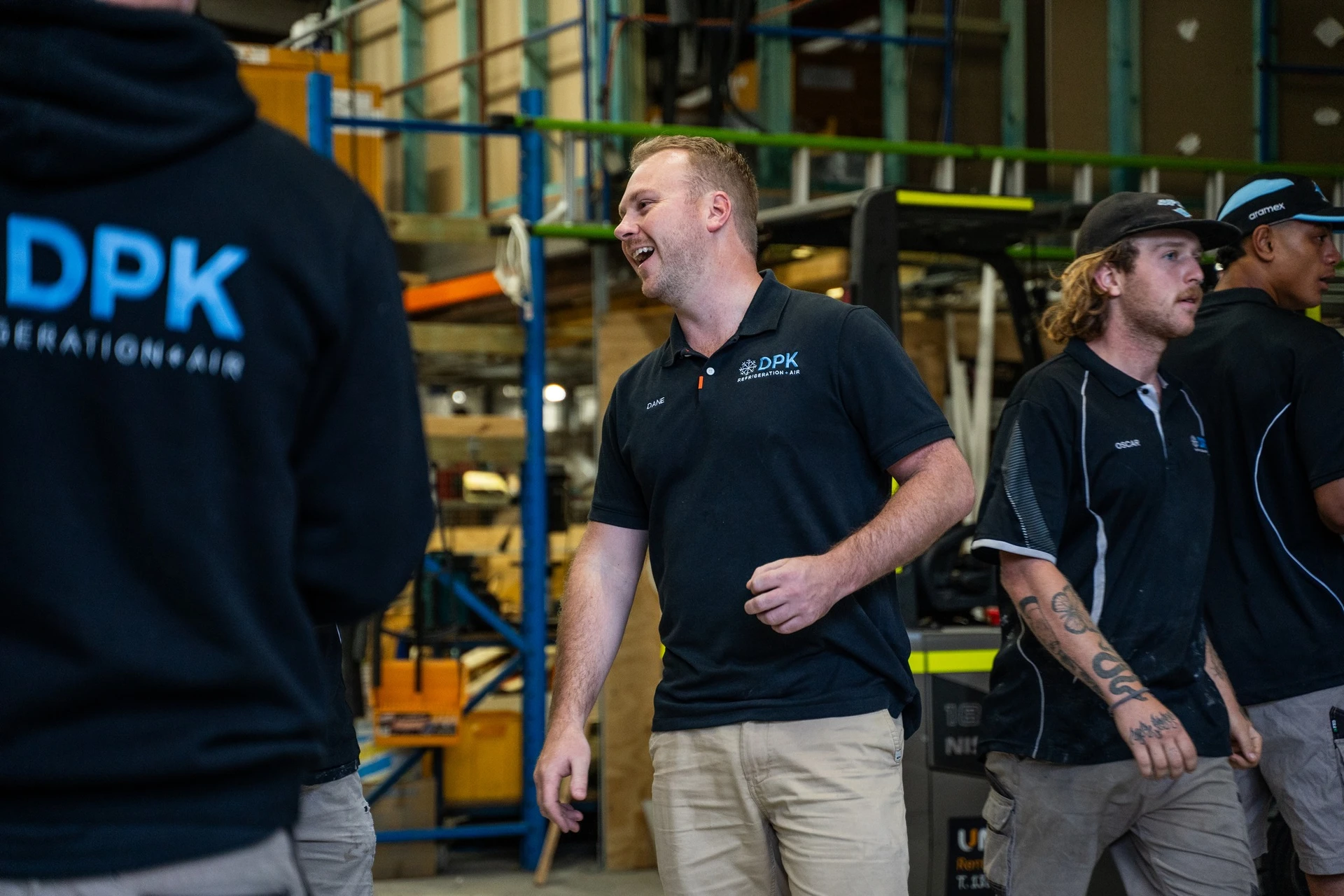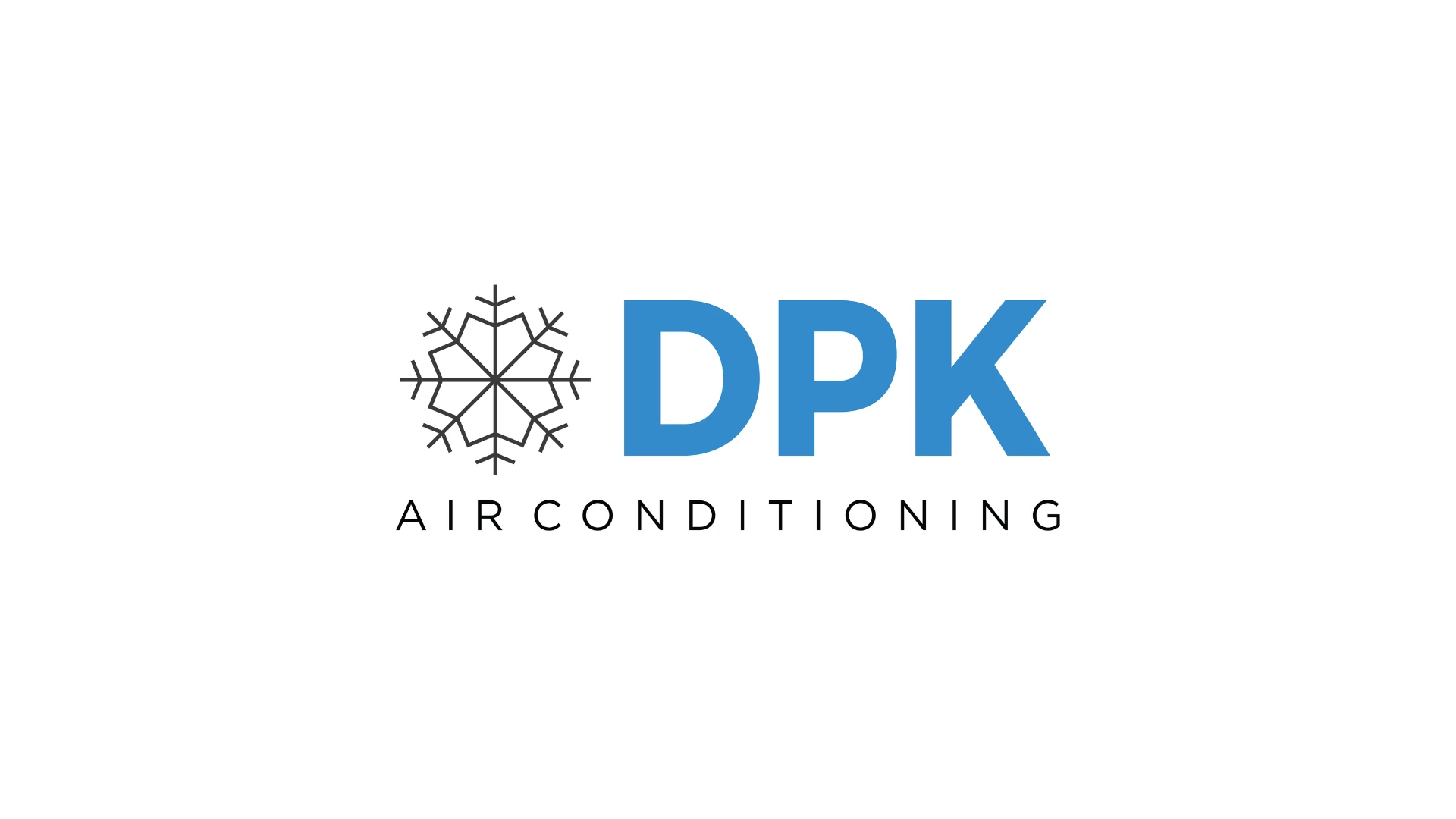How better People & Team Management turned a “nice guy” leader into a confident CEO, and why being too nice is destroying your team’s performance and your businesses success
The Million-Dollar Problem Every “Nice Person” Business Owner Faces
Dane was killing his business with kindness
Literally
As founder of DPK Air Conditioning, he’d built a reputable Sydney-based HVAC business with 15 team members, quality delivery, and strong client relationships
Revenue was decent, customers were happy, and from the outside, everything looked successful
Behind the scenes, Dane was drowning in his own good intentions
- Team efficiency was inconsistent; some days great, others disastrous
- Good employees were getting frustrated carrying deadweight
- Every problem “slightly out of someone’s depth” landed on Dane’s shoulders
- Revenue swung wildly month to month with no predictability
- The business lacked structure, organization, and clear ownership
“It was a bit of a mess. A good business, but no structural ownership. Some periods wouldn’t make money, then a great month, then brake even… to the point where I thought it was normal”
The real problem was that Dane was confusing leadership with friendship
In 10 months, he transformed his “nice guy” approach into a systematic leadership framework that delivered:
- $100K monthly revenue increase
- Sales win rate jumped from 35% to 55%
- 40% improvement in team efficiency
- Three best months ever, back-to-back
- All without adding any new team members
This is exactly how he did it, and why most business owners fail at this completely.
The Accountability Paradox That Destroys Team Performance
Most business owners think being a good leader means:
- Being understanding when people miss deadlines
- Avoiding difficult conversations to keep peace
- Giving second (and third, and fourth) chances
- Doing tasks yourself rather than confronting poor performance
This isn’t leadership — it’s enabling.
The Hidden Cost of “Nice Guy” Leadership
When leaders avoid accountability:
- Your A-players get frustrated because they’re carrying the team while others coast
- Standards erode because the lowest performer sets the actual expectation
- Culture becomes toxic because effort and results don’t correlate with recognition
- You become the bottleneck because easier problems get escalated instead of solved
- Revenue becomes unpredictable because execution quality varies by mood and motivation
Dane experienced all of this. His “good heart” was slowly destroying his business
The People-Pleaser’s Dilemma
“I was giving people leeway because I didn’t have that confidence to nip it in the bud straight up. I just didn’t have that confidence”
The paradox is that the more you avoid accountability conversations, the more accountability conversations you need to have
The solution is you build systems that make accountability automatic and part of the culture, not something that is personal
Dane’s Breakthrough From People-Pleaser to Confident Leader
Dane’s diagnosis was immediate: he needed leadership frameworks, not leadership motivation
Dane wasn’t lacking compassion or work ethic. He was lacking systematic approaches to team management that separated personal relationships from business performance.

The Leadership Identity Shift
Before: “I need to keep everyone happy”
After: “I need to protect the business and the good performers”
Before: Avoiding confrontation to preserve relationships
After: Having direct conversations to improve performance
Before: “I hope they figure it out”
After: “This is my ship and I’m running it”
“Working with Andrew and the ARC Team is like having bumpers in bowling. I knew where to go, but they kept me in the lane”
The People & Team Management Framework
Dane’s transformation centered on Fundamental #8 of ARC’s 10 Fundamentals of Business; People & Team Management
It’s a systematic approach to building high-performing teams through clarity, not conflict
The 4 Parts of Leadership Excellence
#1: Clear Standards & Expectations
- Performance standards that are measurable and specific (outcomes)
- Role clarity that eliminates confusion about responsibilities
- Communication standards that ensure nothing falls through cracks
- Quality benchmarks that define “done” vs. “done right”
#2: Systematic Accountability
- Regular performance reviews tied to specific metrics
- Progressive feedback systems that address issues early
- Consequence frameworks that protect high performers
- Recognition systems that reward results, not just effort
#3: Quick Hiring & Firing Decisions
- Hiring standards that attract A-players
- Onboarding systems that set expectations immediately
- Performance monitoring that identifies issues quickly
- Exit procedures that protect culture and team morale
#4: Cultural Protection
- Values that guide decision-making under pressure
- Standards that apply to everyone, including the owner
- Communication rhythms that keep everyone aligned
- Team development that builds capability and confidence

The Psychology of Systematic Leadership
Before Systems: Every performance conversation felt personal and confrontational
After Systems: Performance conversations became professional and productive
Before Systems: Standards were subjective and inconsistent
After Systems: Standards were objective and automatic
Before Systems: Good performers got frustrated and left
After Systems: Good performers thrived and stayed
Dane’s Transformation: Leading Through Systems, Not Personality
This is what Dane’s leadership evolution looked like over 10 months:
| Leadership Metric | Before Framework | After Framework | Impact |
|---|---|---|---|
| Team Efficiency | Inconsistent, mood-dependent | 40% improvement | Predictable performance |
| Sales Win Rate | 35% | 55% | Nearly doubled conversion |
| Monthly Revenue | Unpredictable swings | +$100K consistent | Sustainable growth |
| Staff Accountability | “Wait to be asked again” | “Do it when asked” | Cultural transformation |
| Leadership Confidence | Hesitant, people-pleasing | Direct, protective | Personal transformation |
The Cultural Shift
Before: Team performance varied based on individual motivation
After: Team performance became systematically reliable
“When you ask someone to do something, they do it, if it’s not already done; not wait to be asked again”
Before: Good people left because they carried deadweight
After: Standards rose and right people stepped up and the wrong ones stepped out
“Now we know what a good person looks like… the standard’s just higher”
Before: Dane did everything to avoid conflict
After: Dane protected the team by addressing issues quickly
“Hire slow and fire fast”
The Framework in Action: The Real Leadership Decisions You Need To Make
Decision 1: The Underperformer Who “Tried Hard”
Old Approach: Keep giving chances because “he works so hard”
New Framework: Measure results, not effort. Protect the team’s standards.
“In my heart he was working so hard, I just didn’t push him in the right areas to be better. I had to show him the focus wasn’t to work harder, but to work better. Once we did this, he lifted… he was looking for that direction”
Result: The employee improved dramatically once standards were clear
Decision 2: The “Difficult Conversation” About Performance
Old Approach: Avoid the conversation and hope things improve
New Framework: Direct feedback based on objective standards
“Look, I appreciate your energy, but here’s how it needs to be done. This is what it looks like from my perspective”
Result: Clear expectations eliminated confusion and improved performance
Decision 3: Protecting High Performers From Low Standards
Old Approach: Let poor performance slide to “keep peace”
New Framework: Remove poor performers on to protect good ones
“I’ve got to protect other people. Whether it be their income, their position, their happiness. I’ve got to protect them to keep their workplace as enjoyable as possible so they stay”
Result: Team culture improved, retention increased, performance became consistent

Why Most Business Owners Fail at Team Leadership
Reason #1: They confuse leadership with friendship. Your team needs a leader, not another friend. Clear standards aren’t mean, they’re professional
Reason #2: They avoid accountability conversations. Every avoided conversation makes the next one harder and more necessary
Reason #3: They hope problems will solve themselves. Performance issues compound over time — they don’t resolve through wishful thinking
Reason #4: They don’t protect their high performers. Your best people will leave if they’re constantly carrying your worst people
Reason #5: They lack systematic approaches to leadership. Leadership isn’t personality-dependent, it’s system-dependent
Your Implementation Guide For The People & Team Management Framework
Phase 1: Establish Clear Standards (Weeks 1-4)
Create objective performance criteria that eliminate confusion
Define standards for:
- Work quality (specific, measurable benchmarks)
- Communication expectations (response times, update frequency)
- Professional behavior (punctuality, appearance, attitude)
- Result accountability (outcomes, not just activities)
- Team collaboration (how people work together)
Rule: If you can’t measure it objectively, you can’t manage it fairly
Phase 2: Implement Systematic Feedback (Weeks 5-8)
Build regular performance conversations into your rhythm
Create feedback systems:
- Weekly one-on-ones with direct reports
- Monthly performance reviews tied to specific metrics
- Quarterly goal setting and career development conversations
- Real-time feedback for immediate course corrections
- 360-degree feedback from peers and customers
Remember: Feedback isn’t criticism, it’s professional development
Phase 3: Build Accountability Structures (Weeks 9-12)
Make performance management automatic, not personal
Implement accountability systems:
- Performance metrics tracked weekly
- Improvement plans with specific timelines
- Progressive consequence frameworks
- Recognition systems for high performers
- Exit procedures that protect team culture
Accountability without systems is favoritism. Systems without accountability is hope
Phase 4: Protect and Develop High Performers (Weeks 13-16)
Create an environment where your best people thrive
Focus on A-player retention:
- Career development pathways
- Increased responsibility and autonomy
- Skills training and professional growth
- Leadership development opportunities
- Compensation tied to performance and results
Your high performers are your competitive advantage, invest in them accordingly
Phase 5: Build Leadership Confidence (Weeks 17-20)
Develop your own leadership identity and decision-making framework
Leadership development areas:
- Decision-making under pressure
- Difficult conversation skills
- Strategic thinking and planning
- Team motivation and inspiration
- Business acumen and financial literacy
Remember: Leadership is a skill that can be learned and systematized
The Leadership Transformation: From Manager to CEO
Dane’s journey illustrates the critical mindset shift every business owner must make:
Level 1: Friend (Avoid all conflict)
- Standards are suggestions
- Performance is excused, not managed
- High performers carry low performers
- Business results are inconsistent
Level 2: Manager (Manage through personality)
- Standards exist but enforcement is inconsistent
- Performance conversations are personal and emotional
- Team culture depends on owner’s mood
- Business results improve but remain unpredictable
Level 3: Leader (Lead through systems)
- Standards are clear, objective, and consistently enforced
- Performance conversations are professional and productive
- Team culture is protected and developed systematically
- Business results become predictable and scalable
Dane reached Level 3 in 10 months. Most business owners never get there, ever
The Bottom Line
Dane’s transformation wasn’t about becoming a “tough boss” or abandoning his caring nature
It was about implementing systematic approaches to team leadership that separated personal relationships from professional performance
The People & Team Management framework took him from reactive people-pleasing to proactive team leadership in 10 months
The result was:
- $100K monthly revenue increase
- 40% efficiency improvement
- the confidence to lead a high-performing team
“No big flashy moments. Just the fundamentals, consistency, accountability; week in, week out. The recipe is: do it, use it, or don’t. Just get it done”
Here’s what this means for you:
If you’re avoiding difficult conversations and your team performance is inconsistent, you don’t have a people problem or a hiring problem
You have a leadership system problem
And leadership system problems can be solved with the right framework and consistent implementation
What Happens Next?
The People & Team Management framework is Fundamental #8 of the ARC 10 Fundamentals of Business
I’ve built and perfected these over the last 15 years of:
Building and exiting multiple $10M+ business myself
Supporting business owners with the growth of their businesses and achieving their individuals goals
It’s available to you, for free, inside of ARC Connect
It’s our free community for small business owners where we share the complete methodology for building a business that creates wealth without consuming your life, and provide execution support so you finally see real change and growth
All of the 10 Fundamentals work together:
- Goals & Priorities (Fundamentals 1-2)
- Financial Systems (Fundamental 3)
- Execution Framework (Fundamental 4) ← You are here
- Sales & Marketing (Fundamental 5)
- Operations & Systems (Fundamentals 6-7)
- Team & Leadership (Fundamental 8)
- Reporting & Accountability (Fundamental 9)
- Mindset & Identity (Fundamental 10)
Ready to build systematic leadership into your business?
Get instant access to the complete People & Team Management Systems and see exactly how Dane transformed his leadership approach and team performance inside of ARC Connect
Instantly Access ARC Connect HERE →
P.S. — Dane increased revenue by $100K monthly while improving team efficiency 40%. That’s not tough-guy leadership. That’s what happens when you build systematic approaches to team management.
Dane’s message to every “nice guy” leader is this:“Being upfront and honest isn’t mean — it’s professional. Your team is looking for direction, not friendship. Give them the standards they deserve, and they’ll give you the performance you need”
The choice is clear:
- Keep avoiding accountability until your best people leave
- Or build leadership systems that protect and develop your team
Dane chose leadership. What will you choose?




